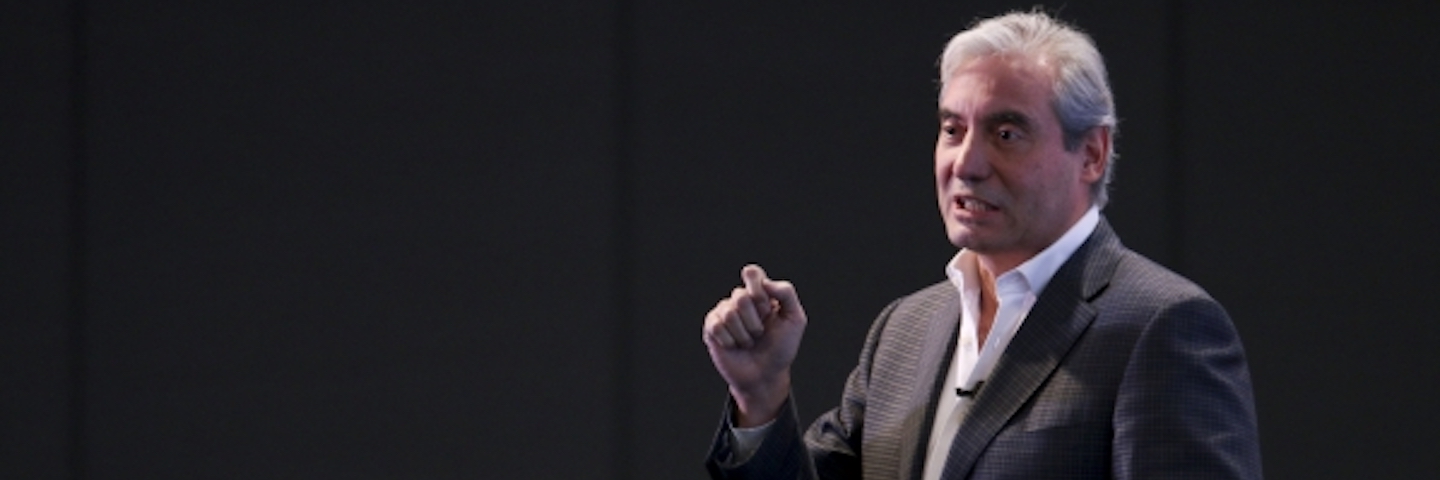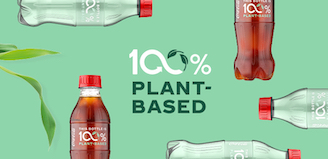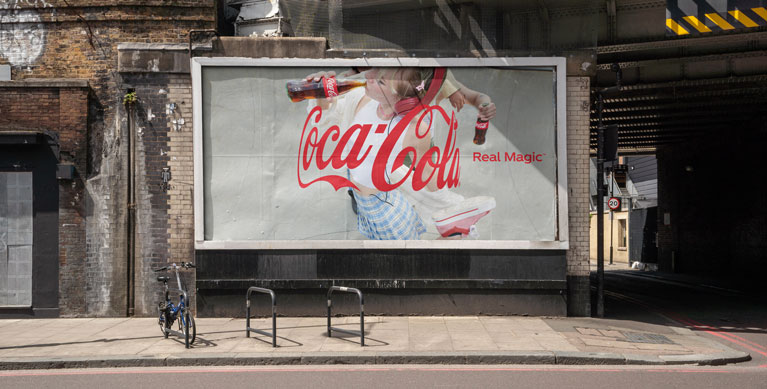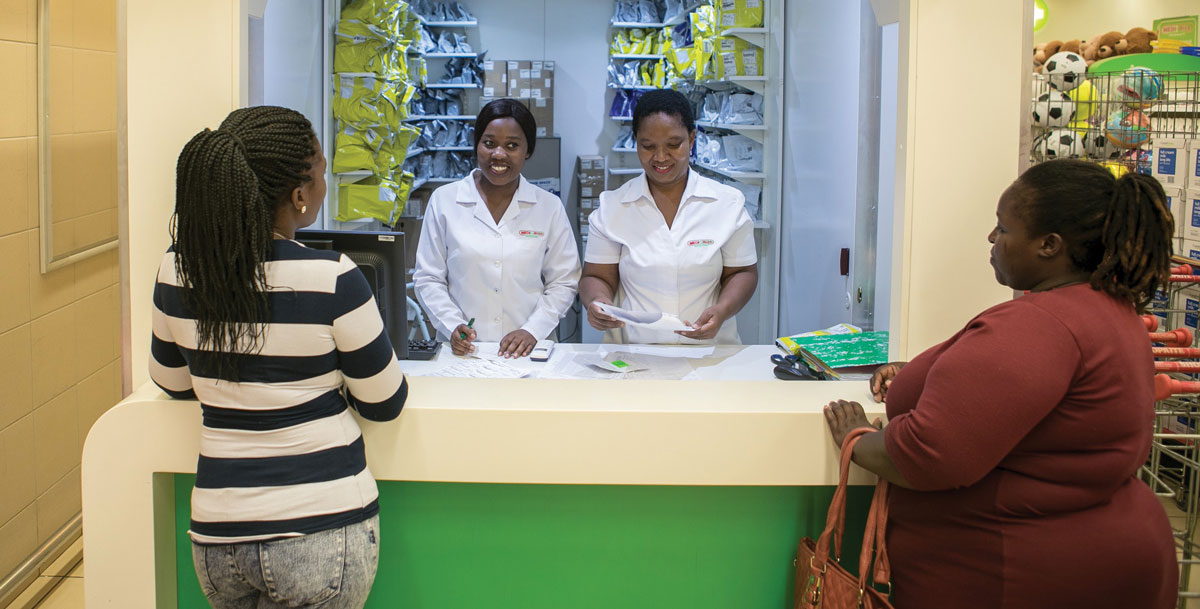
The Power of Quality Leadership
Alfredo Rivera
11-16-2017
The Power of Quality Leadership
Alfredo Rivera
President, Latin America
Full Transcript:
In Latin America, quality leadership is the foundation for growth. And it’s been for many years.
My name is Alfredo Rivera, I’m President of the Latin America Group. I’ve been here in this role for over a year now. And I’m very excited to be here today to let you know – tell you about quality leadership, the power of quality leadership, what it looks like and what it allows us to do in Latin America.
But before I jump into that, I want to give you a brief overview of the region, of the context we’re operating in and of the opportunity we have in our industry in Latin America. So forward-looking statement.
The region, 39 countries, over 500 million consumers, and a very vibrant industry with the retail value of $90 billion, in which we have a 48% value share. We operate in Latin America through four business units. Mexico, Latin Center, Brazil and South Latin. And we partner with 49 bottlers. Our four largest ones are on the screen. And through them we serve over 4 million customers in the region.
So, we’ve been facing challenging times in Latin America. As many of you know, at the end of the commodity supercycle that we had, growth has been a problem in general in economies. We’ve had bouts of very high inflation in several countries and currency depreciation. A lot of that. But we see this changing. We see stability returning to this part of the world. And what it means for us is that, we can now price to restore growth, which is about having more balance between transaction growth and price growth in order to drive revenue growth.
So, under a high inflation and devaluation scenario, we were having to raise prices constantly to keep up and that was affecting our growth and transactions. Now we see the opportunity to balance growth and we’ve been seeing some good results.
The second item is what we see is budgetary constraints. James mentioned governments under duress, financially because again the source of revenue that was a commodity boom ended and they have to look for revenue through taxes. And of course cutting subsidies, but through taxes, the food and beverage industry has become a target.
But more importantly, I think it has impacted the way people look at our category, but in general governments are raising taxes and cutting subsidies, which in the end game is consumers end up paying the bill, which actually has an impact on purchasing power. So, we have to adapt to that and we’ve been evolving our portfolio to smaller packs and in particularly looking at magic price points that are relevant for consumers. So that they stay within the franchise, and so that we can also bring more consumers into the franchise. This is very important for us.
But there are some good news also on political transitions. We’re moving to governments that are more business friendly now, and that bodes well for investments, for investing ahead of demand. And finally, there is a very interesting phenomenon in Latin America over the last 10 years.
Latin American companies have been expanding within Latin America. They’re consolidating across Latin America. Which drives home a point which is we’re more similar than dissimilar in Latin America with our consumers, and in general, in our culture. And that’s an opportunity as I see it for us, as we, as we expand and grow our portfolio across geographies and looking at the best brands we have and making sure they’re available across our 39 countries.
So, we are very excited and I want to – take a look at this, $30 billion in growth over the next three years in retail value, it’s a CAGR of 7%. But what’s interesting is that half of that growth will come from the sparkling category, which is our natural stronghold. We are very strong here. So we’re very confident that we can continue building our position, our strong position. As you can see on the far end, we have over a 50 share in value share and we’ve been consistent in gaining share.
But you can also see the next two categories that are almost are equal to the sparkling category in terms of opportunity for growth. And there again, we have a pretty solid position and we’ve been gaining share in both of them. So, guess what our business plan is about focusing on those categories and really driving growth through those three categories in particular.
Let me now jump over to quality leadership. In Latin America, quality leadership is the foundation for growth. And it’s been for many years. And there’s two ways in which quality leadership enables growth. The first is in leader category. So you heard Francisco explain the importance of leader categories for us.
When we operate in Latin America with strong leadership, we can take more risks. We can test and learn, and not worry about losing our leadership position. So what we’re looking for is, to test and change our approach to the different problems that we face. So for example in Mexico, in 2014 a tax was placed on the food and beverage industry along with a broader tax reform that actually put pressure on consumers and consumer spending. So we had to adapt to that. And what we put together is a plan that’s actually ongoing but it’s a plan which had four components to it.
The first one was we need to keep consumers within the franchise and we need to bring in more consumers, understanding that there is a tax on the category, there is this obesity issue that’s affecting the category and we need to address it. And so we started looking at around the world and we found a program called Share a Coke out of Australia and we implemented this.
This program, along with our approach to revenue growth management, helped us maintain our consumer base and helped us grow our consumer base. On revenue management, what we looked at was expanding our portfolio, particularly in single serve packages and focusing on magic price points to make sure that we remained relevant with consumers.
The third component was about execution discipline, Francisco alluded to this. In Mexico execution has been good consistently, but we redoubled our efforts and we actually expanded our share of visible inventory and our share of cold inventory through this period of time. So, we were able to gain visibility even more visibility for our portfolio.
And finally, our biggest move, our strongest move is around reformulation, reducing the sugar content in our beverages and energizing Coca‑Cola Zero and then moving to Coca‑Cola No Sugar. And again I won’t repeat what Francisco said, but this has been a big part of our growth in Mexico in the last couple of years. And as you can see on the far right, you see the results, sparkling value share up, NARTD value share up. And more importantly, we were able to grow revenue at a 13% CAGR over the last three years.
From that learning in Mexico, we go to Chile. Again, a tax on the category on food and beverages, but with an added complication, regulation on labeling and on and add a ban on sugary beverages during the day. And we applied the same four actions as in Mexico, but added one, which was about engaging with the government, engaging with critics, engaging with all of the stakeholders to work together to find something that was more effective in addressing their concerns and our concerns are around obesity. So we were able to establish thresholds of different levels of sugar and so it was a staged approach on taxes. And we were able to again adapt our portfolio.
On the labeling piece, the law says that if you’re high in sugars, high in sodium, high in fats and high in calories, you have to have this black label on the package. So we were very focused on changing our portfolio. Today, 65% of our sales in Chile don’t have a label, okay. Only 35% of our sales have one label.
There are products in the food business that can have more than one. So we think that by working together with the government, we found something that worked for them, worked with the critics, worked for the business. And of course at the end, we were able to transform our portfolio and reduce the content of sugar.
On the far right again, the results. We grew our consumer base. We were able to reduce our sugar content in our products by 9%. And we grew the mix of Coca‑Cola Zero. Now, Sin Azúcar, No Sugar by 5 points. And again we’re able to double revenue growth from one year to the next.
So with those learnings, what we’re doing is taking these learnings to all the other markets that we have in Latin America and basically asking them to focus on three things. Expand the portfolio, focus on reducing sugar and focus on developing small packages and positioning them with magic price point. Second, execute relentlessly. Every day, we have to generate transaction growth and price smart, so, we get consumers to continue to buy our products, and executing at the point of sale to win. And finally engaging in dialog. I think that the big learning for us is at people want to sit down and talk and find solutions to the concerns they have.
Finally, what’s making this successful in my opinion is that we have a strong backbone, which is a strong marketing sales and distribution structure that we have across Latin America. And this is important, because this is what allows us then to move aggressively in changing our formulations to less sugar across our portfolio. And then some of those work and some of those don’t, I was talking to – I think it was Steve, earlier about a problem we had in Costa Rica, we put a Fanta out there, I think James addressed this in the past meaning, it didn’t work, took it out. We continue working on new variants, and our commitment is to find a great tasting product that’s going to have less sugar in the market, and we think we can do it.
So in conclusion on this piece is we feel confident that that $14 billion in incremental growth in the sparkling category, that we’re going to be able to capture more than our fair share of that going forward by doing these things. The second thing that quality leadership enables us to do is to invest, expand and win in our challenger and explorer categories. It also helps us to move – actually shorten the learning curve by using the best practices from our leader categories and applying them to these categories.
So, let me take you through an example. In Mexico in 2006, we were the number six player in non-sparkling categories, 10 years ago. Today – or by 2016, we were in the number one position in non-sparkling categories. And this came from a commitment from the system to go into those categories, and win. Those categories, where we had relevant profit pools, go in and win. So we put together a vision. We put together an operating model different than the concentrate model, we agreed on a joint venture with our bottling partners, and then we looked out and look to acquire and build capabilities. All this using the platform of our system marketing, sales and distribution to grow.
So what have been the results? We have grown our volume almost by 3 times in the 10 year period. And more importantly, we have been able to improve our operating income almost 6 times over that period of time.
Another aspect building on what I’ve been saying on acquisition, Jugos del Valle was our acquisition in 2007, it was the number two juice player in Mexico at the time. And we’ve been able to gain 31 points of value share over that 10-year period. More importantly, this has been a platform for growth in other categories, as we put it inside the joint venture.
On category development, Francisco talked about Powerade, so I’m not going to repeat it, but we went from, I would even say explorer to challenger very quickly and then from challenger to leader over that 10-year period. And again we’ve gained 39 value share points in the last 10 years.
And finally on the hydration category, we created a masterbrand. We acquired bottler brands, created one masterbrand and in a low value category, we were able to be more efficient and also launch flavored waters that helped our profitability. And we’ve been able to make this a profitable category for us.
So having this roadmap has helped us think how we can accelerate growth across Latin America where we do have number one and number two positions across several markets but we’re still very small in those markets. So we believe that with this roadmap we’ll be successful. And again as I mentioned in sparkling, we’re confident that we can capture more than our fair share of the growth that’s coming particularly in the juice, dairy and plant category and in the hydration category.
So, well, I went through this very fast. So good. So to close, I want to leave you with a thought about quality leadership. Quality leadership allows us to take more risks because we believe that we have so much – there are so much advantage that we have, relative to competitors, that we can make mistakes and we can recover in time. So, back to James’ point on culture is we’re trying to convince everyone in our organization is that we can go faster, we can learn faster, we can adapt faster, and we will continue to have a leadership – as a matter of fact, I think that what’s going to help us sustain our leadership position going forward.
The second piece is around investing, quality leadership allows – generates the resources that we need to invest in and explorers and challengers. And finally, it focuses on executing with discipline, which as Francisco mentioned several time, discipline is a important word now in the Coca‑Cola Company. But it’s been for a long time in Latin America. And if we do this, we should be able to profitably expand beverages for life. Thank you very much.



